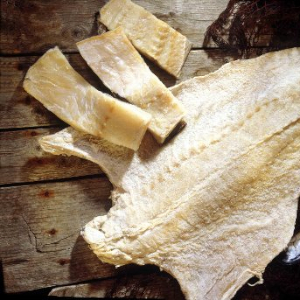Portugal has a reputation for maintaining its individuality in the face of cultural pressure from neighbouring giant, Spain, over a span of centuries. In fact, the two countries have been in competition with each other since before the New World was discovered, and it seems to be a ‘win-win’ situation…
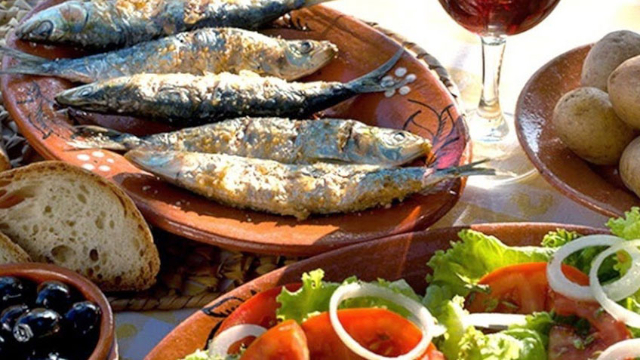 Sardinas Assadas: Grilled Sardines. Along with Bacalhau
Sardinas Assadas: Grilled Sardines. Along with Bacalhau
(salted dried Cod), a Portuguese national dish.
Portugal has been characterized by foreigners throughout the centuries for its wealth, its wine and olive oil, its adventuring spirit, and its enduring ties to the sea.
Eater.com puts Portugal’s cusine in a nutshell thus: “The roots of Portuguese food lie in both native peasant cookery and the ingredients obtained through trade routes established many centuries ago. Bread, rice, spices, pastries, sausages, and seafood — especially cod — remain the staples of many Portuguese meals.”
And let’s not forget the bountiful produce grown in the country’s rural areas.
On our menu today
Bacalhau: Salted Dried Cod (see photo, top of page). Its nickname is ‘the faithful friend’, and that really does tell the tale of this seafood staple’s relationship with the Portuguese. It’s found everywhere food is sold and is prepared in almost every way you can imagine: boiled, baked, stewed, grilled, combined with rice, in fish cakes, and deep fried in fritters.
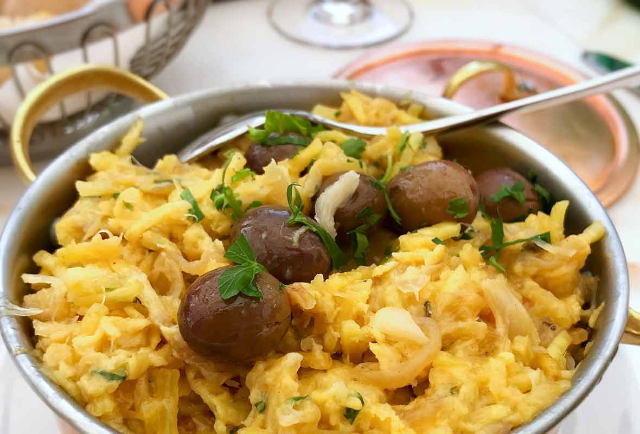
Two favourite Bacalhau dishes are as Bacalhau à Brás, (cod, onions and scrambled eggs) (see photo immediately above), and Bacalhau com Todos – Salted Cod with ‘The Works’ (boiled cod with veggies and sliced hard-boiled eggs).
Sardinhas Assadas: Grilled Sardines. These are not the little Sardines you find in cans. Prime specimens come up to 8 in. / 20 cm long (see photo top of page). They’re gutted and grilled, with head and tail on, and bones in, until crispy on the outside and flaky white on the inside. So ubiquitous is the sardine in Portugal that it is the focus of a number of summer festivals.
Cozido à Portuguesa: Portuguese Boiled Dinner. This is actually a traditional stew of boiled meats, sausages and vegetables, and its ingredients depend on where in the country you are making it. In the north, they’re big on Sausage. In the south, you’ll find Cozido with chicken or lamb. It’s a national dish, along with Bacalhau and Sardinhas.
Porco Preto: Iberian Pork. A beloved delicacy true Porco Preto is made only from the famous acorn-fed, free-range black pigs of Iberia.
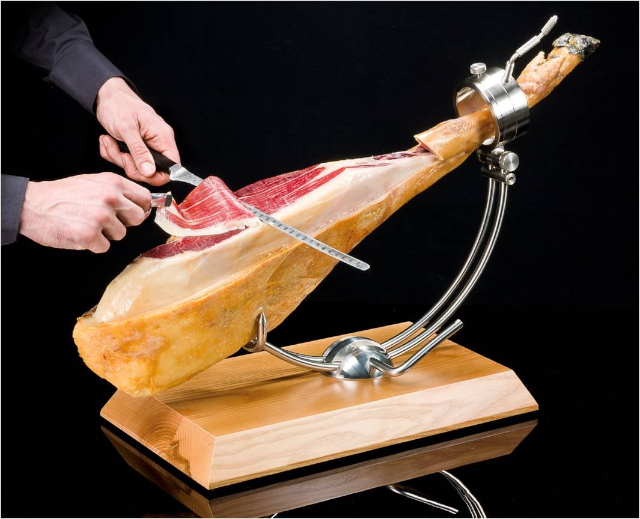
One of the most famous Porco Preto products is Pata Negra Ham (see photo immediately above) – the Iberian equivalent of Italian Prosciutto. Pork cutlets are also a favourite, often enjoyed as Plumas de Porco Preto, Cutlets with sides of Salad and French Fries.
Sopa de Pedra: Stone Soup. Not what you’re thinking, though it started out that way. The legend goes that a hungry monk with nothing to eat sat by the roadside boiling a stone in a pot of water. Passersby by felt sorry for him and started adding things to the pot: Pieces of meat, vegetables, potatoes, beans, and so on. When the soup was ready, the monk removed the stone and invited those who had contributed to dine with him. The parable of Sopa de Pedra is still used to teach the importance of sharing. You can literally make it out of any foods you have on hand which go together. Whatever you put in it, you’ll get a feast out of it!
Feijoada: A Bean Stew, enjoyed all across Portugal. In the traditional recipe, for which the rural region of Trás-os-Montes is famed, pork is combined with red and white beans, stewed with sausages and veggies.
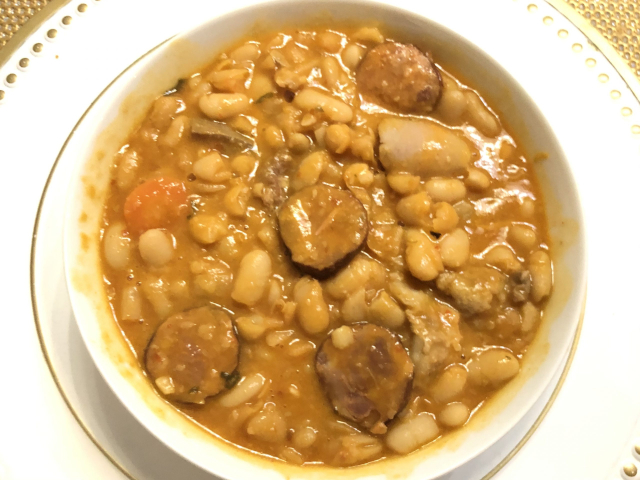
Spices include cumin, cloves, garlic and (of course) paprika. Cooks who are close to the sea may add shellfish.
Francesina: When I was little, my Dad knew a man who had a cement company. His name was Franscesini, and I think his forebears must have come from the Porto area in Portugal, where the Francesina is a traditional sandwich. Meats used might include steak, ham or sausage. Classic toppings include melted cheese, spicy tomato sauce, and a sunny-side-up fried egg. It’s said Chef Daniel da Silva, who trained in France, adapted the Francesina from the Croque Monsieur.
Posta mirandesa: Grilled Beefsteak. Every culture that loves beef has a signature Grilled Steak dish. France is famed for its Chateaubriand, Italy for its Fiorentina.

In Portugal it’s Posta Mirandesa, a thick slice of veal tenderloin grilled over an open fire and served with sliced potatoes and sautéed greens.
There’s much more to explore…
So get Googling ‘Portuguese cuisine’ and discover the hundreds of ways the Portuguese prepare Bacalhau, their love affair with meats of all kinds, and the myriad ways they use the produce grown in their rich rural lands. Tomorrow, we’ll sample some of Portugal’s dozens of breads, and on Wednesday, we’ll survey traditional Portuguese sweets and beverages.
~ Maggie J.

